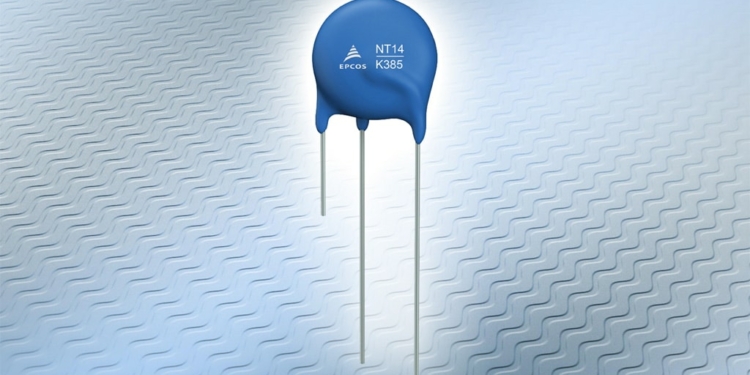Source: TDK news
TDK Corporation (TSE:6762) has extended its EPCOS ThermoFuse™ family of fuse protected varistors with the new compact NT14 and NT20 series. The new ThermoFuse components feature a footprint that fits into existing circuit board layouts.
The NT14 series (disk diameter 14 mm) is designed to absorb maximum surge currents with an 8/20-μs pulse of 6 kA at rated voltages of between 130 VRMS and 680 VRMS, while the NT20 series (disk diameter 20 mm) has a surge current capability with an 8/20-μs pulse of 10 kA at rated voltages of between 130 VRMS and 750 VRMS. The NT14 and NT20 series offer a maximum energy absorption of up to 220 J and 480 J for 2 ms, respectively. Both series are available in 2-leaded and 3-leaded types, with the third lead used to monitor whether the fuse has been activated.
ThermoFuse varistors are uniquely designed disk varistors that are connected in series with a thermally coupled fuse and are therefore intrinsically safe. If the varistor overheats, the patented thermal fuse trips and isolates the varistor from the grid with unrivalled dependability. This prevents any potential damage on the PCB or to components located near the varistor and increases the reliability of the equipment to be protected. Thanks to their thermal resistance and flame-retardant design of the epoxy coating, the ThermoFuse NT series meet UL 94 V-0 requirements, and are also listed as Type 4CA in UL 1449, 4th edition
With their compact dimensions and excellent surge current capability over a broad range of voltages, the NT types are suitable for use in a wide range of applications, such as ballasts for lighting, home appliances, power supplies, inverters for solar installations, frequency converters for drives, and smart meters. They can also be used for the general protection of electrical wiring and installations
Main applications
- Ballasts for lighting, home appliances, power supplies, inverters for solar installations, frequency converters for drives, smart meters
- General protection of electrical wiring and installations
Main features and benefits
- Compact size
- Wide range of voltages from 130 VRMS to 750 VRMS
- High surge current capability of up to 10 kA
- UL 1449 listed
Key data
| Series | Ordering code |
Disk diameter [mm] |
Operating voltage [VRMS] |
Surge current capability [kA] |
Max. energy absorption [J] |
|---|---|---|---|---|---|
| NT14, 2 leads | B72214R* | 14 | 130 to 680 | 6 | 50 to 220 |
| NT14, 3 leads | B72214W* | 14 | 130 to 680 | 6 | 50 to 220 |
| NT20, 2 leads | B72220R* | 20 | 130 to 750 | 10 | 100 to 480 |
| NT20, 3 leads | B72220W* | 20 | 130 to 750 | 10 | 100 to 480 |































